Filipino Bliss
|
• Bit International Edu Exchange Hotel • Cheng Hong Hotel • Crowne Plaza Hotel • Dong Dan Yin Di Hotel |
“Be careful, it’s a dangerous place!” and “Why do you want to go there anyway?” were among the more favorable comments a great many number of people gave me when I told them I was about to hop over to the
Philippines for an eighteen day stint this March. One acquaintance remarked tongue-in-cheek how I would very soon come to realize how nice the rest of the world actually is after traveling there, with most of other people’s commentary thrown
at me in the same line. “The food is bad”, “You’ll be so happy to get out again”, “Stay near to your hotel at night”, and of course “Be careful not to be mugged, kidnapped, or worse…”
Yep, the PI sure has a questionable rep among the uninitiated.
Needless to say, none of this proved helpful in lifting my spirits, boosting my morale, or raising my pleasant anticipation of the journey ahead of me.
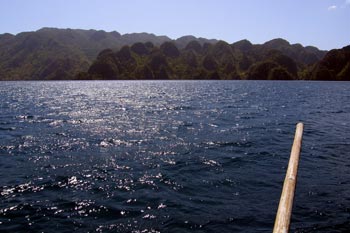
To put things a bit into perspective: I’ve traveled to 40+ countries on five continents. The Philippines were the last country in Southeast Asia I hadn’t been to. Before finally deciding to hop over there I was fortunate enough to have had
the opportunity of exploring a lot of corners of the region during the previous six years. Of course I can’t claim having been everywhere, and there are still plenty of places I want to visit or even return to, the sooner the better. I
have neither lived in any of those countries, nor have I spent especially long spells in either one of them. I am not mentioning this to make a show of myself, but to point out that I’m not just another starry-eyed rookie on his first trip
overseas.
I believe most people who have traveled extensively know and have experienced to a certain degree the phenomenon of becoming jaded over the years. The more stunning locations and wondrous spots one is lucky enough to get before one’s
eyes the less one is likely to be truly impressed by what else is to follow. It’s human nature to compare new experiences, views, tastes, smells, even feelings with experiences made in the past, if only on a subconscious level. This sometimes
has the result that we have to make ourselves aware again and remind us of the beauty before us, the amazing uniqueness of a situation or location we find ourselves faced with, and generally the things we tend to take for granted and don’t
consciously appreciate anymore as much as we probably should. I believe I know what I’m talking about, as unfortunately I’m quite prone to these sentiments.
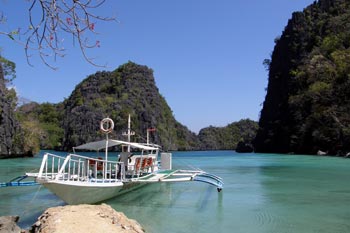
I boarded the Thai Airways 777 to the Philippines with rather low expectations. Not least had I put it way down on my list of places I wanted to travel to in Asia. In my mind I had already decided that in case I would run into any kind of seriously bothersome
or disagreeable situations I’d be out of the country again without any hesitation, and back to the more familiar grounds of Thailand or Malaysia within the wink of an eye.
From within the first hours of actually being in the country until the moment I finally flew out again I never wasted another thought on any of this at all. In short, the Philippines just totally blew me away. I even dare say the unfortunately
far too limited time I spent traveling in the country has been one of my best trips in recent years, and I already find myself scheming my return. This submission is meant to cast a more benevolent light on the merits of visiting this island nation.
The places:
Infamous and shambolic Manila, an amorphous mass, and my first stop in the country after arriving from Bangkok on a late Saturday evening. Hot, noisy, heavily polluted, in this sense not unlike Bangkok actually but with a lot more raunchy
feel to it. Masses living in dire poverty around shantytowns, nowhere in the Philippines is it as obvious as in this place. The historic center was almost completely flattened by US bombing during the Battle of Manila. It’s an uninspiring
place, and I only spent a day. This was not what I came to the Philippines for. The best two things I can think of when remembering Manila were its great selection of ethnic food from all over Asia and the spectacular pollution fuelled sunsets
over the bay.
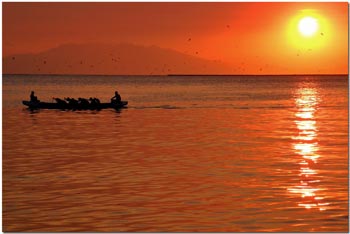
My next stop, after catching a short domestic flight from Manila’s chaotic domestic airport, was the island of Palawan. They call it the Philippines’ last frontier, and I was about to find out why.
In my opinion Palawan is, without the shadow of a doubt, one of the real treasures and most rewarding destinations of not only the Philippines, but of all of South East Asia. To this day I wonder why hardly anybody really speaks or actually
knows about this place. Stretching from the Mindoro Strait down to the top of Borneo, it is a magnificent, coral-fringed range of jungle-clad mountainous islands jutting up dramatically from the Sulu Sea. Due in equal parts to its rugged topography
and its distance from the other islands it has managed to stay largely pristine, even though it’s quite easy to get to from Manila and other islands of the Archipelago. Paved roads are few on the narrow but over 300 mile long main island,
making overland travel potentially time consuming and cumbersome, particularly during the rainy season when some of them frequently become impassable for days. Most of the small airports’ runways are basically frighteningly short flattened
dirt tracks that only allow very small turboprops to land and take off again. Yet another factor that keeps the tourist numbers reasonably low.
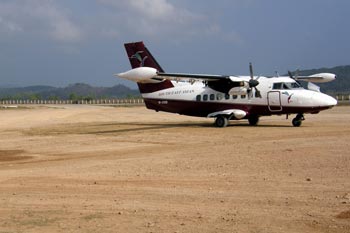
Palawan features an endlessly convoluted coast and myriad offshore islands, bizarrely beautiful seascapes, magical fresh water lakes, dense rainforest, and a quite unique flora and fauna, making it the natural wonderland and biodiversity hotspot that
it certainly is. There’s excellent scuba diving particularly around the Northern end of the island to boot. It actually does lure a good number of scuba divers not least because of the numerous Japanese war and merchant ships that were
sunk there in mostly shallow waters along the coastline by US Navy bombers during WWII.
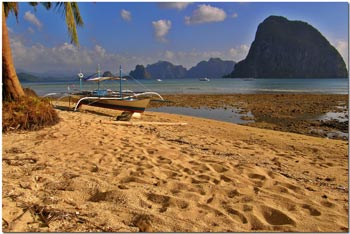
It seems as if the Philippines government has drawn some lessons from the past when extensive dynamite fishing and other destructive practices in some areas wreaked havoc on parts of the delicate ecosystem, the aftereffects of which can sadly still be
seen in some places around the island. Thankfully, ecotourism and the preservation of the environment seem to rank higher on the agenda nowadays. The whole of Palawan has been declared a Fauna and Flora Watershed reserve, within which are several
protected areas. In addition, there are designated wilderness areas, forest research reserves, wildlife sanctuaries and marine reserves. These days it’s even forbidden to take a souvenir shell from the beaches back home.
What there is not however is a good variety of nightlife, maybe with the exception of a few scattered “clubs” in the mostly uninspiring Palawan capital Puerto Princesa. I didn’t see any beer or girlie bars either, which
is a bonus in my book, albeit they probably exist to cater for the locals. Palawan certainly doesn’t draw the carousing party crowds, and hopefully never will. What you can do for evening entertainment though is enjoying the fabulous sunsets
on the beach in blissful solitude, and then head to one of the many natural hot springs, sip your drink chilling in the hot water, and gaze up into night sky that explodes with stars.
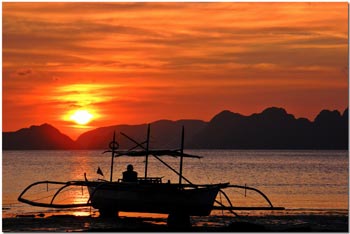
The area that probably fascinated me most was the so called Bacuit Archipelago around the little dusty marina town of El Nido at the Northern tip of the main island. The archipelago is similar to Vietnam’s Halong Bay or the Krabi and Phi Phi area
of Southern Thailand, only, I dare say, more beautiful. It is a collection of islands that leap skyward from the crystal-clear waters like jagged spearheads. They feature an endless amount of palm-fringed, white-sand beaches as well as coral gardens,
turquoise waters with great underwater visibility and an abundance of marine life, and secluded lagoons so stunningly beautiful to stagger even the most jaded traveler. Peaceful patches of paradise abound with natural wonders, and you don’t
even have to be particularly lucky to have them all to yourself by the time you ride in on your hired Bangka. Southern Thailand must have been similar to this, some 30-40 years ago. Walking down alone long stretches of beach while a tranquil dawn
breaks over the islands of the bay. Bliss indeed!
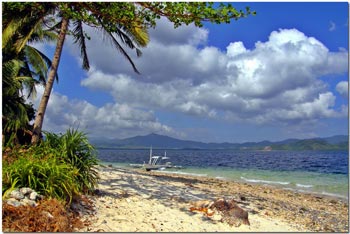
The days flew by and after having spent some great eight days on Palawan it was time for me to move on. Not without regrets though, as I wished I had scheduled significantly more time for this region.
Two domestic flights with Cebu Pacific Air later the Airbus 319 touched down at the airport of the provincial capital Legazpi city in South Eastern Luzon, which lies at the foot of the very active, threateningly looming, and perfectly cone-shaped
volcano Mount Mayon.
I basically traveled down there for one purpose only…to swim with the hordes of whale sharks that migrate there every year to feed in the shallow waters of Donsol bay, a mere 90 minute bus ride away. It’s a truly exhilarating experience
swimming along with these huge blue-grey, silver-spotted creatures that can grow to a length of more than 15 meters. After less than three hours on the water I had seen and been swimming with at least a dozen of those gigantic yet gentle beasts,
often eye to eye only a few feet away from their enormous bodies.
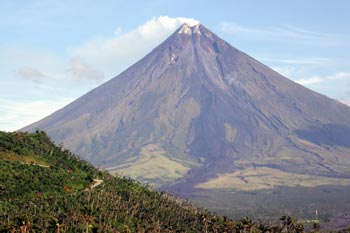
Famous Boracay, the heavily made-up reigning queen of the Philippine resorts, was my last stop in the country. Patong Beach Filipino style basically, only with a much nicer beach that stretches out for miles, an equal amount of touts, but less hookers.
Not a bad place to stay for a night or two, especially if one enjoys beach bumming during day hours and partying during night hours. Snorkeling and scuba diving are rather mediocre. A lot of the local businesses cater to the great numbers of Japanese
and Korean tourists that descend on the tiny island.
Boracay totally paled to all the other locations I had been to on the PI before. I find it quite unbelievable that this is most, if not even all, many visitors to the country ever get to see. Well, I guess it serves the purpose of keeping
all those people confined on this tiny island, leaving the rest of the archipelago’s delights to more intrepid travelers.
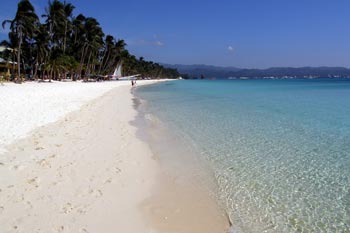
The Food:
Granted, it’s no secret the Filipino cuisine is not necessarily among the most talked about or praised ones in Asia. It is not exactly renowned for its sophistication, neither in taste nor in presentation. Filipinos sure like their
meat, and I got the impression they like it fatty and crudely prepared, which I don’t appreciate at all. Either way, one doesn’t really have to resort to the countless outlets of Jollibee’s, Dunkin’ Donuts and Mc D’s
to avoid starvation.
As with most Asian countries, the staple food in the Philippines is rice. It is most often boiled and served during most main meals. Leftover rice is often fried with garlic and onions to make fried rice. So far no surprises! Native fruits
are often used in cooking as well. If well prepared, some of this stuff can actually be quite tasty. Freshly baked Buke (Coconut) Pie or Bicol Express, a fiery stew cooked in creamy coconut milk, come to mind. And then there’s fresh seafood
of course, plenty of it, almost everywhere you go. What’s more to ask for?
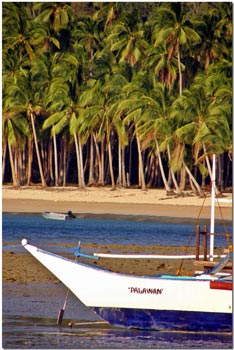
The people:
I generally found people extremely approachable and easy to talk to. They may not be as smiley as in Thailand, but ebullient and easy going people. I was lucky enough to meet a bunch of really friendly locals in a number of places who readily
invited me in their families’ simple homes, treating me like a king. The interaction with the locals, even in more remote places that usually don’t see too many foreign visitors and with very simple folks who you’d normally
not have a chance to associate with due to language barriers in other Asian nations, is aided by the fact that English is widely spoken throughout the whole country. A huge pro in my book.
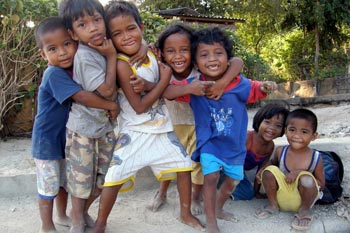
The hassles:
Without a doubt, the PI is one of the biggest P4P destinations in the world. Every big city and quite a few smaller towns cater to this business. Obviously, depending on your stance that may be a good thing or a bad thing.
Ninoy Aquino International Airport in Manila is chaotic at best, the domestic airport close by even more so. They greet you with shabby and seriously outdated infrastructure, endless lines, multiple relentless stringent security checks, and,
in my case, with airport police officers offering to sell prepaid cell phone SIM Cards and soliciting prostitutes. It definitely pays to be early for check-in and to approach the ordeal with a relaxed attitude as it may take one the best part
of an hour only to get past the initial security checks and into the terminal buildings. In many of the smaller regional airports all round the PI one must also be prepared to unpack your luggage in front of the security staff upon entering the
terminal as X-ray machines may not be existent.
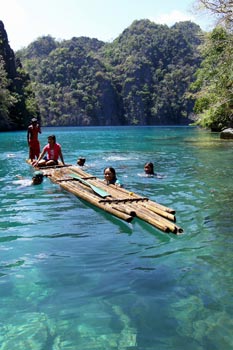
Crime, violence? Sure, it’s everywhere, but I didn’t see any of it in almost three weeks in the country. Bad things can happen to you anywhere, and for sure the odds are bit more stacked against you there than in your hometown. I tend to
believe if one allows common sense to prevail, stays away from rowdier places, and generally doesn’t do anything stupid, the risks are negligible.
During all my time in the country I never really got the impression that anyone was bluntly trying to take advantage of me. Taxi driver readily switched on their meters, tricycle drivers everywhere (with the exception of touristy Boracay
perhaps) always asked for the standard rate any local would pay, shop keepers far more often than not quoted me fair prices, not too much haggling down the foreigner prices necessary beyond common reason.
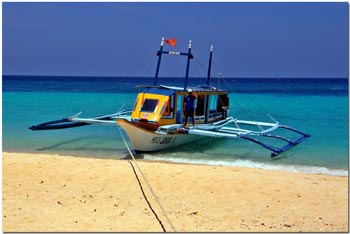
Conclusion:
So did the PI live up to their questionable reputation? To me…not at all! I truly consider them a great place to escape the hordes that descend on other parts of South East Asia. Often overlooked by travelers and generally quite off the
beaten track, they are a great alternative to the mainstream tourist destinations in the region, particularly Thailand, where unlike the Philippines most package tourists from overseas seem to get stuck.
It obviously does take some time and effort to come to grips with what’s really going on in the country. Nothing is ever as simple as it seems, but for the casual traveler these things are not really a major issue if you don’t
choose to make them one.
The PI may be a little more challenging to visit than some other Southeast Asian mainland countries, however in my opinion it’s well worth crossing over the South China Sea, going the extra distance to reach the them.
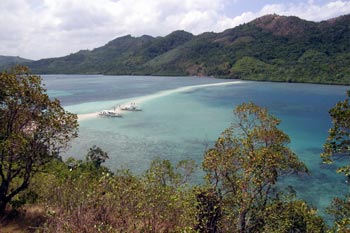
The rowdier places like many of the major cities, as well as the naughty nightlife hotspots like Angeles and Sabang on Mindoro can easily be avoided.
Culturally I had expected I’d be put off by the PIs’ strong catholic tradition, specifically because I really get a kick out of Buddhist monuments and sites of worship, but that was not the case at all either. I found the Filipinos’
approach to their predominant belief refreshingly interesting, particularly their penchant for religiously themed bumper stickers and graffiti on vehicles. The jeepneys stand out, laden with religious icons, splashed with color, and festooned
with sanguine scribblings, openly flaunting the fact that, at heart, they are dilapidated, smoke-belching piles of scrap metal.
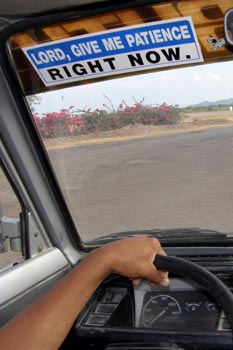
I’ll be back within a year. That much’s already been decided. There are heaps of places I haven’t been to yet but am incredibly curious about, particularly on Northern Luzon and the islands of Negros and Bohol.
The bliss:
Different strokes for different folks obviously. To me the PIs’ delights mostly were its nature and its people. If either one of these two factors usually “make” your trips, I can highly recommend you give the PI a chance.
Me they certainly didn’t disappoint…
Stickman's thoughts:
Very nice report and nice photos – it looks like the weather was great when you were there. Also, it is nice to hear that the Philippines offers a less heavily touristed experience than other more popular spots in South East Asia.



